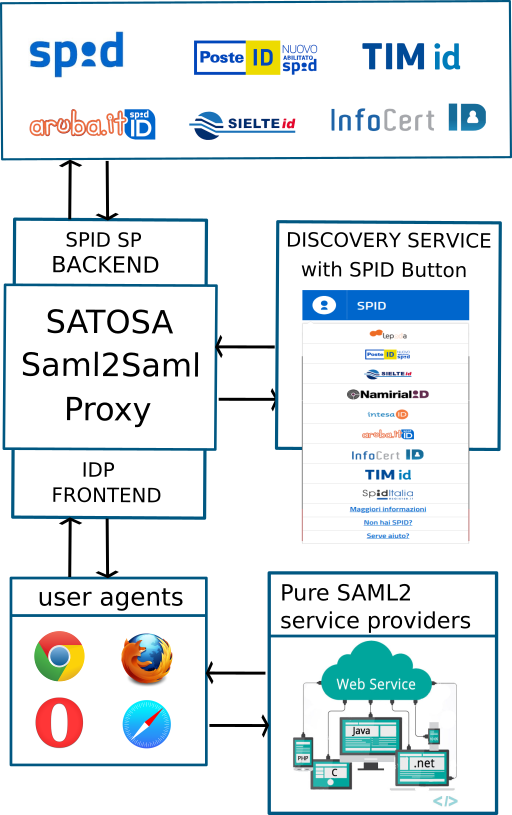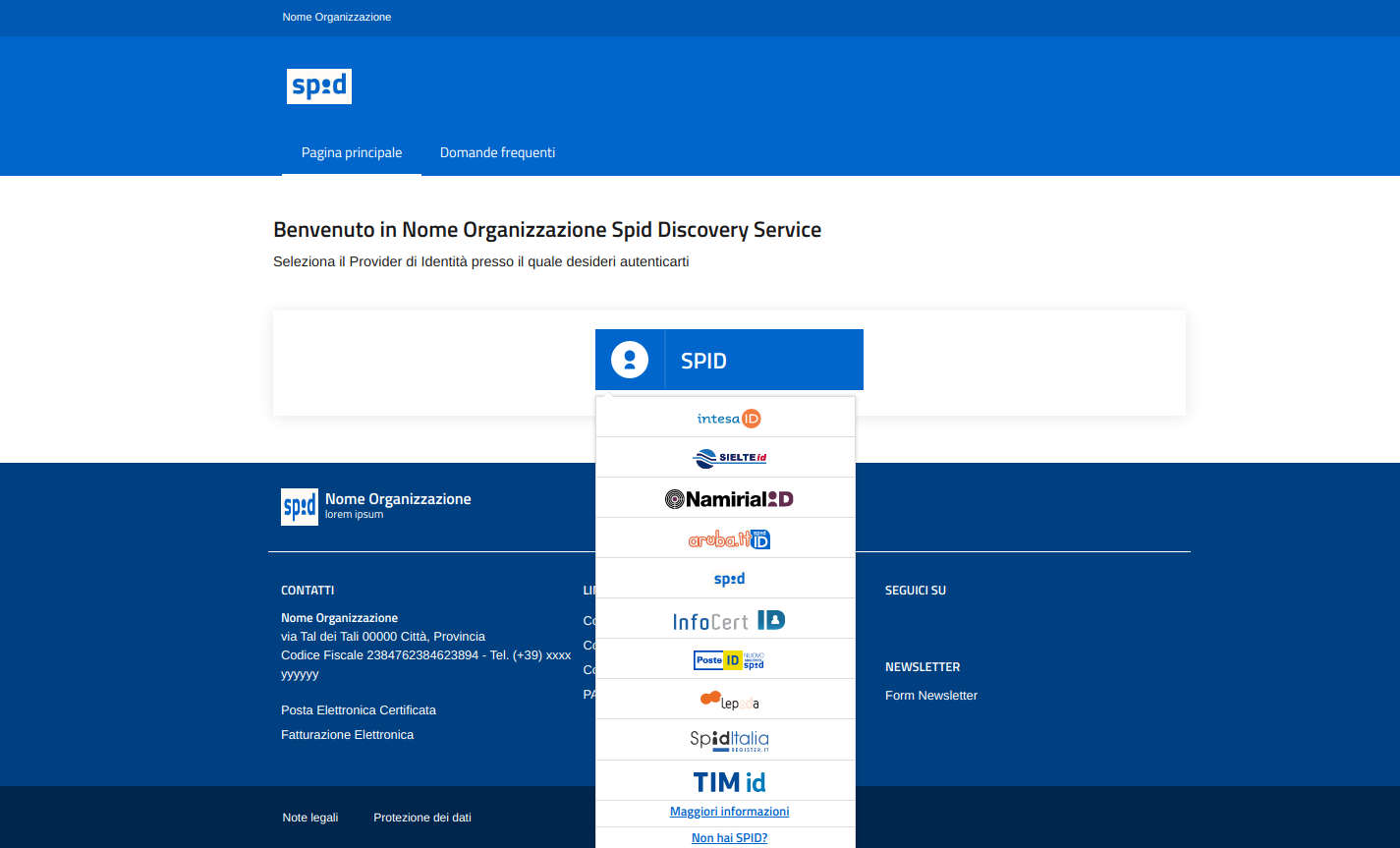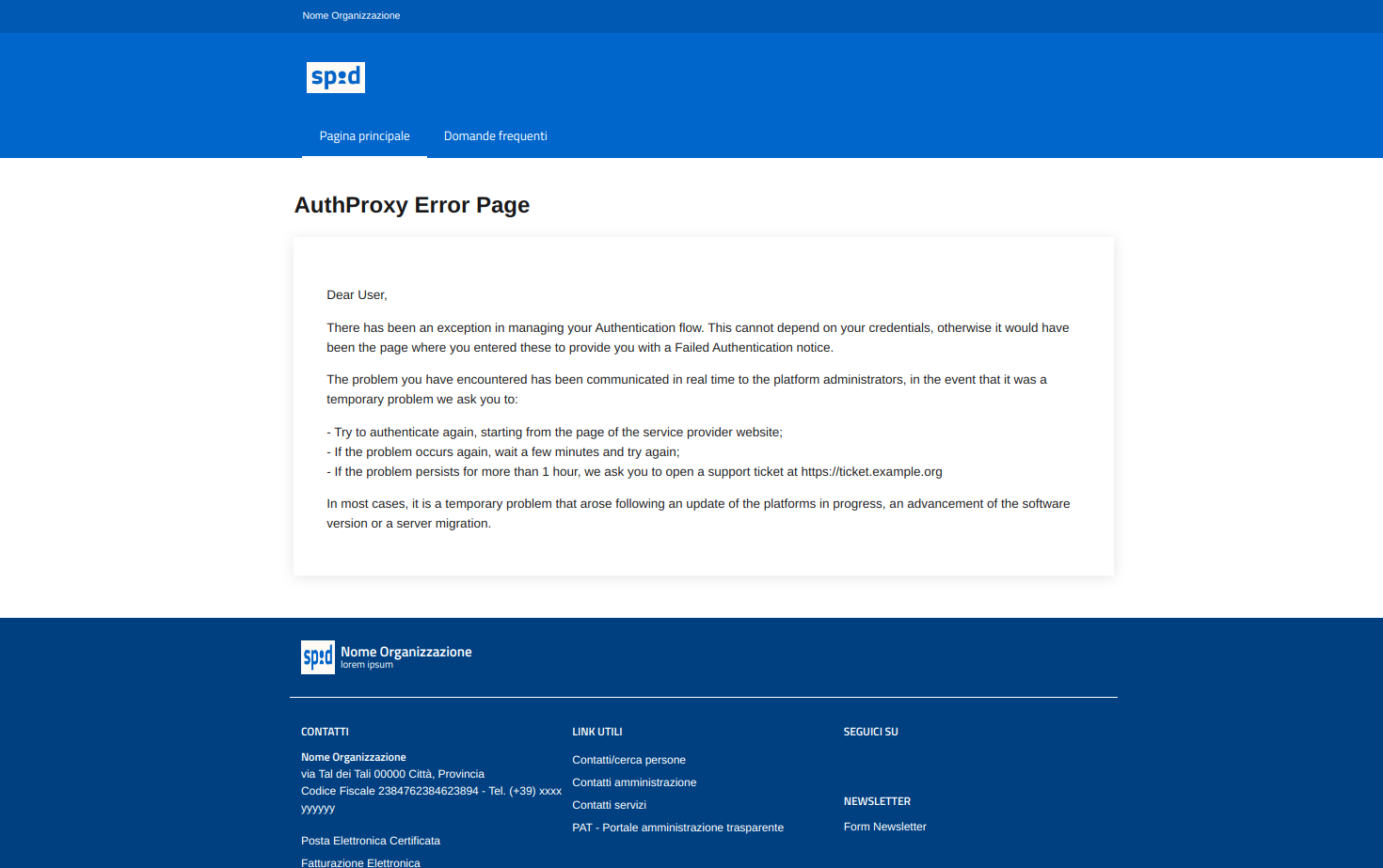Satosa-Saml2Spid 0.2.0
web application
A proxy that allows legacy Saml2 service providers to communicate with Spid Identity Providers
Published by UNIVERSITA' DELLA CALABRIA
Technical contact Giuseppe De Marco
Vitality:
69%
The vitality index, as explicited in the guidelines for the acquisition and reuse of software for Italian PA, is calculated according to the following four main categories:
- Code activity: the daily number of commits and merges;
- Release history: the daily number of releases;
- User community: the number of unique authors;
- Longevity: the age of the project.
The ranges of every measure can be found in the vitality-ranges.yml file.
Development status: stable
Software functionality
Saml2 IdP
Saml2 SP
Saml2 proxy to SPID Saml
compliant to spid-saml-check validations
Customizable with additional backends, frontends and microservices
https://www.unical.it
detailed information
Satosa-Saml2Spid 0.2.0
web application
Last release 2021-01-25 (0.2.0)
Type of maintenance internal
Stato publiccode.yml
License Apache-2.0
Platforms
linux
web
List of dependencies
OSS
Python
Enabling platforms SPID
Compliance GDPR Security Guidelines
Supported languages
Italian
English
Extended description
Satosa-Saml2 Spid is an intermediary between many SAML2 Service Providers and many SAML2 Identity Providers. Specifically it allows traditional Saml2 Service Providers to communicate with Spid Identity Providers adapting Metadata and AuthnRequest operations to the Spid technical requirements. This solution allows us to adopt multiple proxy frontends and backends to adapt and allows to communicate systems that, due to protocol or specific limitations, traditionally could not interact each other.
Short glossary:
- Frontend, interface of the proxy that is configured as a SAML2 Identity Provider
- Backend, interface of the proxy that is configured as a SAML2 Service Provider
- TargetRouting, a SATOSA microservice for selecting the output backend to reach the endpoint (IdP) selected by the user
- Discovery Service, interface that allows users to select the authentication endpoint


